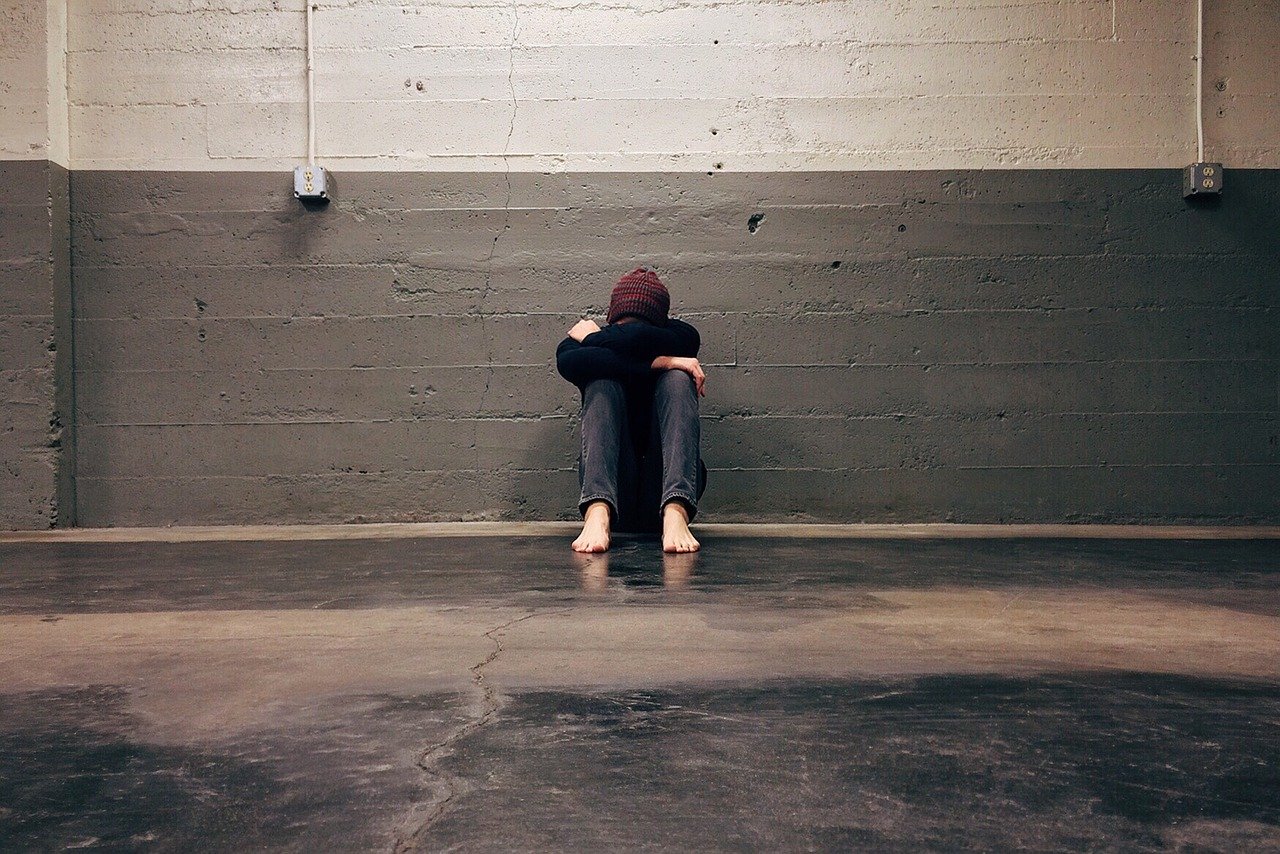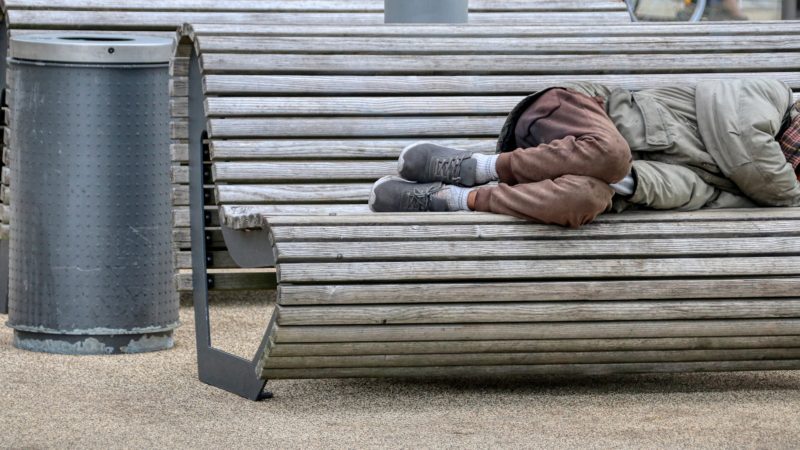Students experiencing homelessness face challenges day-to-day without a pandemic — now there are fewer people and fewer resources to help them.
Story by Katie Aulenbacher
Public education experts have christened 2020 the Lost Year, with school closures that risk “blowing a hole in kids’ math and reading skills, tanking test scores for years to come and making it a scramble for some to even finish high school,” says Politico. For students experiencing homelessness, the stakes are even higher.
A typical student can already find remote learning difficult: a home cramped with stressed parents and distracting siblings sheltering from the virus, glitching technology struggles and no teacher at the front of the room to ask questions. But a homeless student starts a typical year with their own problems, like the lack of a stable home, not knowing when they might have a full meal, and many times needing libraries and public internet to do any homework. Layer on a pandemic, and they suddenly have no access to these public places or the internet, no school at which to learn and eat, and few stable routines at all.
“For children and youth experiencing homelessness, schools are much more than classrooms,” said Barbara Duffield on a nonprofit education news site named after the 74 million children in America, The 74. Duffield is the Executive Director of SchoolHouse Connection, a nonprofit that advocates for homeless students. “School is often the most stable and secure part of their day, a place that — quite unlike where they sleep at night — does not change,” she continued. “Early childhood settings and schools may also be their only source of food, education, health and mental health services, caring adults and safety.”
This is why The School Superintendents Association, American Academy of Pediatrics, American Federation of Teachers, and National Education Association released a joint statement in July stating, “We recognize that children learn best when physically present in the classroom. But children get much more than academics at school. They also learn social and emotional skills at school, get healthy meals and exercise, mental health support and other services that cannot be easily replicated online. Schools also play a critical role in addressing racial and social inequity.”
They continued by urging a safe return to in-person learning, a possible solution to the inequality homeless students face with remote-learning compared to a typical student at home.
“Early childhood settings and schools may also be their only source of food, education, health and mental health services, caring adults and safety.”
Broward Teachers Union President Anna Fusco expressed concerns to NBC Miami about both the general feasibility of this and Broward County Public Schools’ (BCPS) remote curriculum saying, “This expectation of five hours of screen time is just unrealistic for any age group, even adults.”
In a normal school year, homeless students are already 20% less likely to graduate high school than their housed peers. Their “home” is often volatile, unstable, and possibly lacking power or internet, making remote-learning almost an impossibility rather than just inconvenient — schools give homeless students the tools they need to function as a typical student. One testimony at a hearing by The Select Subcommittee on the Coronavirus Crisis called schools “the frontline of our child welfare system.”
Remote-learning skews the odds of success even further for homeless students, as many of these inequalities between them and housed students are experienced day-to-day, and the pandemic is only layering more on top.
One of which is their “home” — which is often not a place suitable for homework or concentration for students experiencing homelessness — now becoming a health risk too, and that’s if they even have a place at all.
“One of the biggest concerns overall is their safety, the fact that all of the places that they’re staying don’t allow for social distancing,” said Duffield, increasing their risk of contracting the virus, with more families than usual being kicked out of shared living quarters too due to these fears. “Families who are staying with other people — that’s the majority — they’re really at somebody else’s mercy. Those situations are crowded, they destruct easily, and of course there’s the risk of violence.”
Libraries and other public spaces with power and internet were often the refuge for homeless students, for school work, sleeping, or otherwise. But the limited access to public spaces now because of the pandemic has given many of these students nowhere to turn.
Duffield described one outreach worker’s experience with students who lost access to the laundromats where they cleaned their clothes, the campgrounds where they slept, the libraries where they spent afternoons, and the fast food joints where they charged their devices, “You could just tick down the list of places where somebody who didn’t have a stable home would even be, and every single one of them was like ‘nope, nope, nope, nope, nope.”
The advocate had to go to great lengths to connect families with resources, delivering food and homework to students, and even letting them use her phone as a hotspot. “She was the food, she was the wifi, she was the instruction,” Duffield explained. “And of course I’m thinking about all the places where they don’t have somebody like that.”
In the 2018-2019 school year, Broward identified 510 students living in shelters and 356 students residing in a park, campground, car, bus, or a public place.
In the words of the Institute for Children, Poverty, and Homelessness, “The disadvantages faced by students and families experiencing homelessness have only been intensified by the realities of the COVID-19 crisis.”
According to Carole Mitchell, the supervisor of BCPS’ Mckinney-Vento program called Homeless Education Assistance Resource Team (HEART), “The concern that everyone has with this unique population of students is, ‘Is this creating more of an academic gap?'” One possible impact Mitchell says “we might be surprised” by is a positive trend due to transportation inequalities being a moot point. Being away from school also means increased family time for those students with more stable relationships and a lack of peer judgment about clothing and housing, but the academic gap is far from becoming equal.
Remote-learning does not ensure a level playing field because of homeless students’ poorly equipped learning environments that are now practically non-existent. This is despite the federal law known as the McKinney-Vento Act requiring public schools to provide unhoused students with a “full and equal opportunity to succeed,” and meant to protect youth experiencing homelessness.
“The disadvantages faced by students and families experiencing homelessness have only been intensified by the realities of the COVID-19 crisis.”
Many families and even educators are not familiar with students’ rights under McKinney-Vento and remote learning is making identifying and reaching out to eligible families even harder. Newly unhoused families, of which there may soon be a surge, are a particular concern because they have even less of a chance of knowing what resources are available to them. “One of our horror scenarios is that we’ve got all these displaced families who don’t understand that they can still get their children an education,” said Duffield.
Families displaced to a motel, for example, may not understand that they meet the McKinney-Vento definition of homeless. Their children would be eligible for immediate enrollment regardless of incomplete paperwork, and assistance with supplies like the internet access and computer they’d need for remote learning.
When BCPS transitioned to remote learning on March 30, HEART noticed about 550 homeless students were not logging in to receive online instruction. Following up to determine why, they found it was mainly from this lack of access to a computer and internet, which liaisons arranged for them, bringing the number of absent students down to under 100. The district has also given out a total of 2.5 million meals and more than 100,000 computers during the pandemic, according to BCPS Superintendent Robert Runcie’s testimony before the Select Subcommittee.
BCPS identified an additional 107 homeless students over the last three months of the spring semester, for a total of 5,052 students. During the same period last year, HEART identified 281 homeless students. “It is my firm belief that the abrupt pivot to remote online learning negatively impacted our ability as a district to identify students [PreK-12th grade] experiencing homelessness,” commented Mitchell.
Even before the pandemic hit, she estimates the district had an additional 2,000-9,000 unidentified homeless students. This means her team of six liaisons was responsible for up to 14,000 unhoused students.
Among this population were 316 unaccompanied homeless youth. As the District Liaison, Mitchell is accountable for providing “assistance to unaccompanied youth to complete the types of tasks that parents would typically do” per McKinney-Vento guidelines, a considerable burden for one person.
Duffield cautioned that, “We’re going to have to begin to think about remediation already, catching people up from the spring, and making sure that students experiencing homelessness are very specifically focused on as a group that may need additional help.”
Asked about children participating in remote learning without adult supervision due to their parents working, Mitchell responded that no families have disclosed such concerns, possibly from fear of being reported to the Department of Children and Families for neglect. BCPS is looking into placing such students with community organizations, according to NBC Miami reporting, but plans have not been finalized.
Duffield is seeing signs of hope in bettering homeless student’s situations though with the broader recognition of the scale and types of challenges they face, their situation now on the radar of state superintendents, for example. “I think that kind of elevation and visibility of this really invisible student population is one benefit,” she said.
Teachers and administrators are also learning greater sensitivity to homeless students in situations like Zoom lessons, which could disadvantage students without a sheltered, quiet, electricity-enabled place to participate. Duffield mentioned an infographic telling teachers, “Don’t require it, don’t incentivize it. If students don’t want people to see where they’re staying, or how many people are in the background, or what’s going on…sensitivity around that I think is really important.”
Mitchell emphasized that HEART families, ones being helped by the HEART association, are just as invested in education as their housed peers, and don’t want to be pitied or defined by their housing situation. They’re hoping “for a hand up, not a hand out,” she said.
She also relayed that BCPS plans to remain fully remote for the foreseeable future due to Florida’s high levels of the virus.



